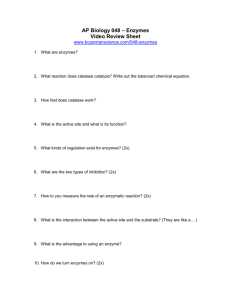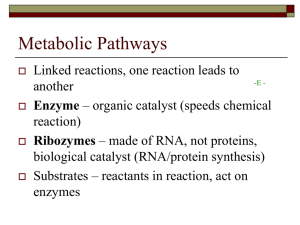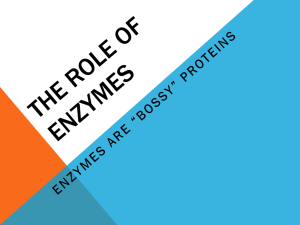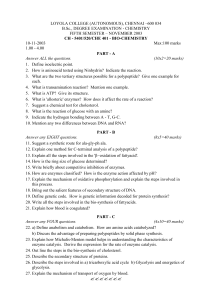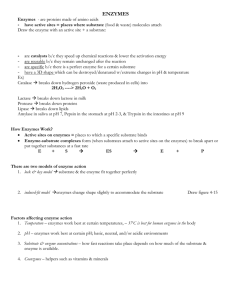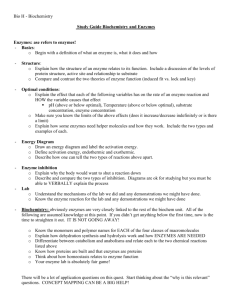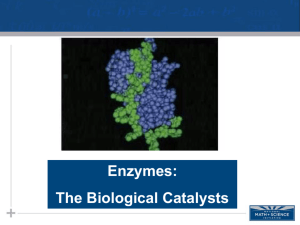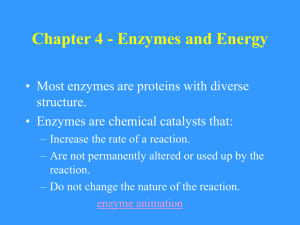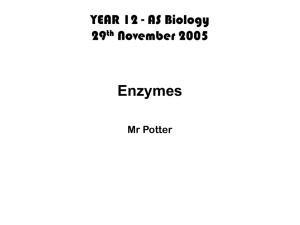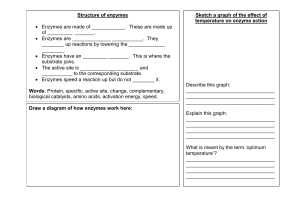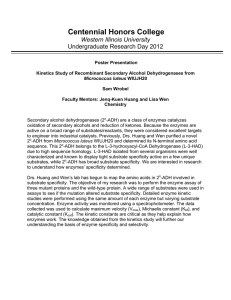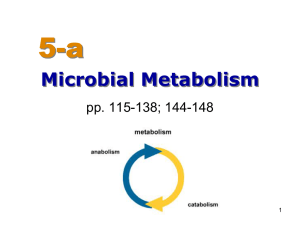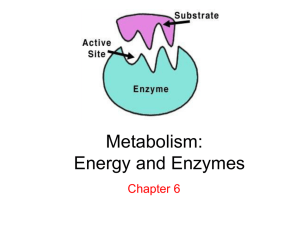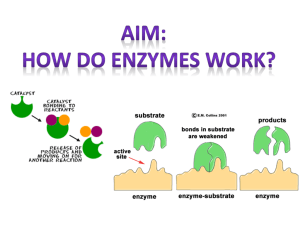Anabolism vs Catabolism
advertisement
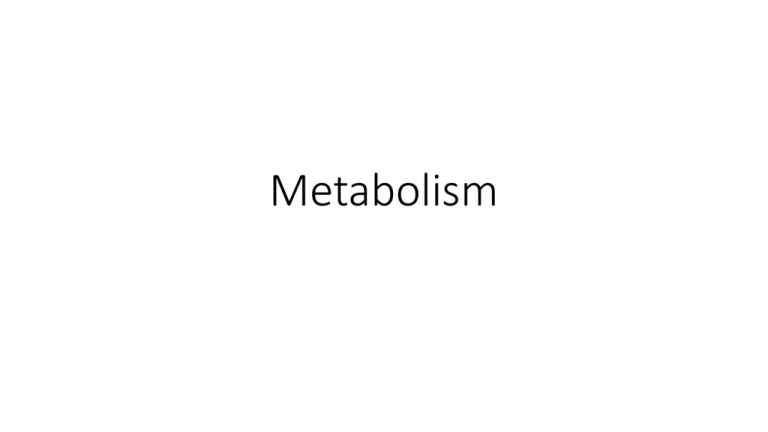
Metabolism Enzymes: review Anabolism vs Catabolism What is necessary for a chemical reaction to begin? • Reactant(s) must come together in the right orientation • With enough energy • So ho do enzymes catalyze this process? • Lowers activation energy • Template for proper orientation of substrates • As active site “holds” substrate – can stress/strain the substrate, breaking bonds • More conducive microenvrionments – ie altering pH Enzyme specificity • What contributes to it? Complementary fit Lock and Key Model Induced Fit Model (replaces lock and key) • Enzymes = globular proteins • Shape shifters – subtle • Active site is not rigid • Can fit more snugly around substrate Catalysis Saturation – limiting factor = max enzymatic rate Enzyme efficiency • Determined by environmental factors • Optimal conditions Cofactors • Nonprotein helpers • Zinc, iron, copper • Vary in how they bind to enzyme • Perform a critical function in catalysis coenzymes • Organic cofactors • Most vitamins Other factors influencing reaction rate… • inhibitors • Reversibility Competitive inhibition Noncompetitive inhibition examples • Sarin: nerve gas • DDT and parathion • antibiotics Regulation • Selective inhibition • Cells control when and where enzymes are active • control the building of the protein • Control the protein once its built Allosteric regulation • Protein function at one site is affected by the binding of a regulatory molecule to a separate site • Can inhibit or stimulate


